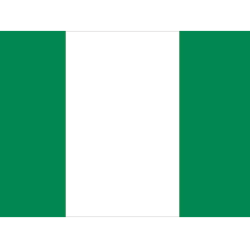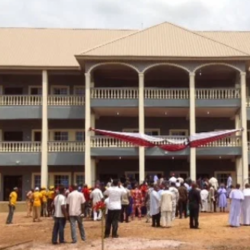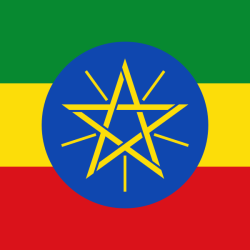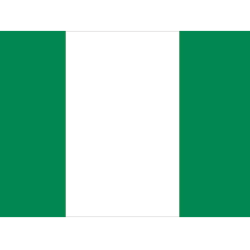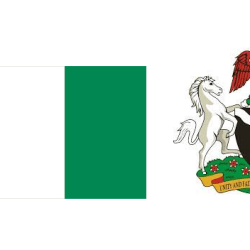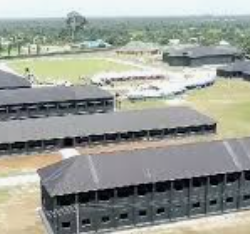Although Nyandael and Burton stated that tattooing took place during infancy and youth, the information we have is that it occurred when “a young man came of age” and “during spinsterhood” for young women, that is, between puberty and marriage. Although the tattoos were marks of ethnic affiliation, they also expressed a social commitment to marriage. Indeed, marriage made them mandatory–no man would marry a woman without them (see Punch’s comment). The community called a mother’s children omoiwu (“children of the tattoo” when necessary to distinguish them from more distant blood relations such as a grandchild. The tattoos were thus transformative, signaling a change in jural status (unmarried/ married, youth/adult). “

“Iwu, depicted on many brass and ivory figural works (Figs. 9-11), are of considerable antiquity. The practice survived until the 1940s. They can still be seen on very old people but are disappearing as the senior generation dies out. DierickRuyters, the Dutch chronicler who sojourned in Benin City early in the seventeenth century, gave us our first description: “[The Bini] cut their body from the armpits to about the groin, or in the middle, with three long cuts on both sides, each one finger broad, and consider this a great virtue conducive to their salvation” (1602, in Talbot 1926, vol. 2:399). The merchant David Nyandael later commented on the gender variation of the tattoos: “The females are more adorned with these ornaments than the males, and each at the pleasure of their parents. You may easily guess that this mangling of the bodies of these tender creatures may be very painful; but since it is the fashion here and is thought very ornamental, it is practiced by everybody” (1705, in Talbot, p. 399). In 1889 the Englishman C. Punch described the operation: “All girls had to undergo it. The child was laid down and held by the mother, and the expert proceeded to scrape the skin at the place required, with a sharp glass, very lightly, as one erases a blot of ink on a book. I was not told that anything was rubbed into the skin . . . but the child’s suffering was acute” (in Talbot, p. 399). A quarter century earlier, Sir Richard Burton had described the tattoos as “three broad stripes of scar, like the effects of burning, down the front of the body from the chest to the lower stomach,” and also mentioned the forehead iwu: “vertical lines of similar marks above the eyebrows” (in Talbot, p. 399).
While these commentaries testify to the antiquity and continuity of iwu, they are silent about its origins. Here one has to rely on oral histories. In one version collected by EkhaguosaAisien from UnionmwanOrokhorho (pers. com., 1985), a traditional surgeon, the tattoos originated during the reign of Oba Ehengbuda in the late sixteenth century. Ehengbuda married the daughter of the Yoruba ruler of Akure, but she refused to consummate the marriage because he did not have “Akure tribal marks.” The enraged Ehengbuda abused his wife, word of which reached the Alakure. When Ehengbuda visited Akure, his father-in-law attacked him with a cutlass, and Ehengbuda’s body thereafter bore the scars of this assault. So as not to embarrass their king, his subjects imitated them. Jacob Egharevba, however, offered a different account (1968:15): iwu originated with Oba Ewuare (ca. 1440). Ewuare, distraught over the death of two of his sons on the same day, punished his subjects, who then fled the city in panic. To stem this exodus and ensure that deserting subjects could be easily identified, Ewuare ordered everyone tattooed.
Both narratives point to an essential purpose of iwu: to mark citizenship and birthright. Visible and indelible, the tattoos acknowledged one’s right as ovien-oba, “slave of the king.” For every freeborn citizen of Benin, “I am a slave of the king” remains a declaration of ethnic pride. The ancient Roman boast that one was a citizen of Rome is quite similar.
Reference: edostate.gov.ng/the-traditional-upper-body-scars-and-tatoos-in-benin
Edo
Edo is a state in southern Nigeria that was created in 1991 from the former Bendel State

The capital and largest city of Edo State is Benin City, which was the center of the ancient Benin Empire

The state has a population of about 4.8 million people as of 2022, and covers an area of 19,559 square kilometers

Edo state is bordered by Kogi, Anambra, Delta and Ondo states, and has a coastline on the Atlantic Ocean
The state is home to various ethnic groups, mainly the Edo (or Bini), Esan, Ora, Akoko-Edo, Owan and Afemai people
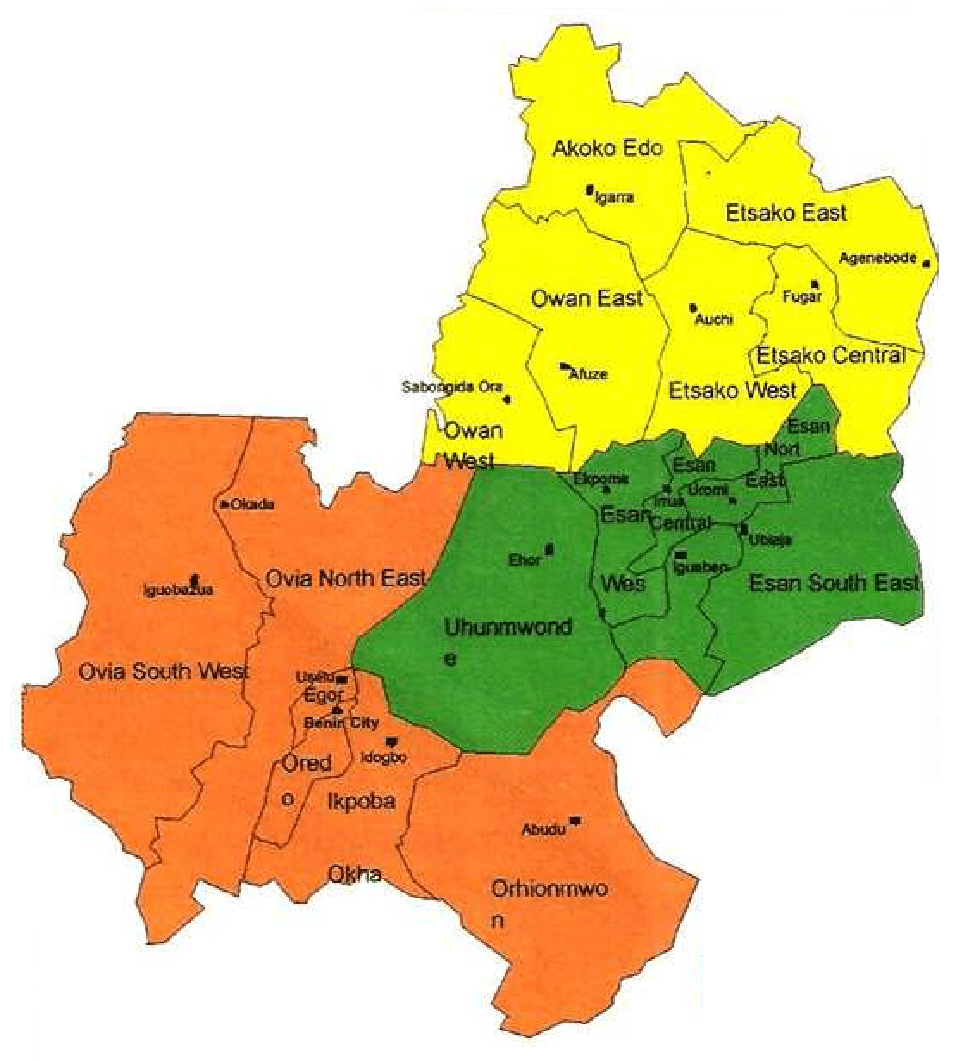
The most common language spoken in the state is Edo, which belongs to the Edoid branch of the Niger-Congo language family
The state is predominantly Christian, but also has followers of Islam and traditional religions
Edo is known as the Heartbeat of Nigeria, and has a rich cultural heritage and history
It has a diverse economy, with sectors such as agriculture, manufacturing, oil and gas, tourism, education and health


Edo people
With Benin City as capital, the population of the entire state is approximately 4million.It is made up of three major ethnic groups; namely the Binis, Esan and Afemai. However the State has a high presence of residents from across the country and the world because of its cosmopolitan tendencies. Benin City the capital has a history of being one of the foremost destinations of Europeans during their exploration of Africa continent many centuries ago. Some of the flash points have remained enviable tourists’ attraction for the state.


Geography
The State has a land mass of 19,794 km square. Lying on 05 44 N and 07 34 N latitudes,05 4 E and 06 45 E longitudes. Edo State is low lying except towards the north axis where the Northern and Esan plateaus range from 183 metres of the Kukuruku Hills and 672 metres of the Somorika Hills.
Location
It is so located that it forms the nucleus of the Niger Delta region. It is bordered by Kogi state to the North and Delta State to the East and South, Ekiti and Ondo States to the West.
Climate
The climate is typically tropical with two major seasons- the wet (Rainy) and the dry (harmattan) seasons. The wet season lasts from April to November and the Dry Season December to March.
Government
The governor of the state, at every time is the head of government. There is the Executive arm of government, the Legislature and the Judiciary. The state has eighteen local government councils each constitutionally headed by a democratically elected Chairman.
Vegetation
Edo is blessed with two major vegetational belts namely: the Forest Belt of the South and Central parts while the Guinea Savannah is in the northern part.
Minerals
Natural resources in Edo State are in abundance. There is a heavy reserve of hard wood and high quality timber. Other mineral endowments include: Rubber, Limestone, Marble, Lignite, Clay, Kaolin, Crude Oil, Gold, Granite and Bitumen.
Agriculture
Apart from the wood products, there is high yield of Agricultural food crops, Cocoa,
Rubber, Palm trees, Vegetables, Cotton, Pineapple, Mango, Cashew, Cassava, Bushmeat, Snails, Fish and Rice.
Industries
The thriving industries are Carving, Saw-milling, Rubber processing, Cement and Textile, Brewing and Flour milling etc. The state also boast of key industries in the country such as Bendel Cement Factory Okpella, Bendel Brewery Benin City, Guinness Nigeria Benin-City, Nigeria Bottling Company (Coca-Cola) Benin City, Ewu Flour Mill Ewu and Bendel Pharmaceutical Benin-City, Okomu oil Plc , Presco Plc just to name a few. The Small-Scale industries are also on the increase with many Banks and Fast Food Eateries opening up their outlets in the capital and other emerging cities across the state.
Education
Edo State is one of the most educationally advanced States in Nigeria. Its notable tertiary institutions include the University of Benin, Ambrose Alli University Ekpoma, Igbinedion University Okada, Benson Idahosa University, Auchi Polytechnic Auchi, College of Education Ekiadolor, College of Agriculture Iguoriakhi and Institute of Management and Technology Usen.
Healthcare
Government in conjunction with local governments and some international agencies have successfully spread Medicare across the state. There are government hospitals, local government centres by local authorities and quite a few others jointly managed with some non governmental agencies.
Seaports
From Edo State, there is easy access to Warri seaports. The state also has a direct route to Lagos from land and air. Edo is known as the heartbeat of the country because of its easy accessibility from various Southern cities like Lagos, Warri, Port Harcourt and the Eastern states.
Arts and culture
Edo is famous for her works of art, they include plaques, busts and royal figures. Some of these art works were looted during the British invasion of the Benin Empire in 1897. Various pottery, utility carving, bronze casting, smothering, Jewelry, mat-making, cloth weaving etc thrive in the state.

